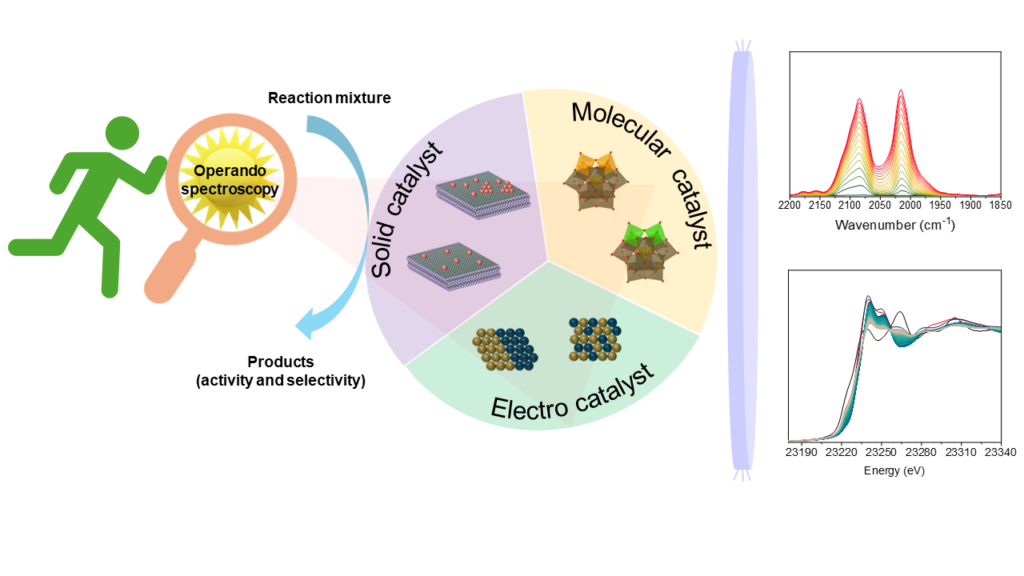
- This event has passed.
Seminar Dr Bidyuit SARMA

Dr Bidyuit SARMA
Researcher, Team C, LCC
e-mail: bidyut-bikash.sarma@lcc-toulouse.fr
Understanding Dynamic Behavior of Molecular and Solid Catalysts with In-situ/Operando Spectroscopy
Catalysts are highly dynamic in nature and tend to restructure during reaction. Single-atom catalysts (SACs) or atomically dispersed catalysts are one of the rapidly emerging areas where the dynamic behavior of catalysts plays a pivotal role.1, 2 SACs have the potential to achieve maximum efficiency (theoretically), and on the other hand, due to high surface energy, SACs tend to agglomerate.3 This makes it challenging to know whether the active site is an isolated metal or an island of metal. In order to understand the dynamic behavior, in-situ/operando spectroscopy4, 5 is the key, which refers to spectroscopic investigations that are as close as possible to the laboratory experiments.
In-situ/operando X-ray absorption/emission spectroscopy (XAS/XES)4 and Diffuse reflectance Fourier transform infrared spectroscopy (DRIFTS)6 are ideal tools in this case to track the dynamic behavior of SACs. XAS is a bulk technique that provides average information (oxidation state, symmetry, coordination of metals) of bulk and surface sites whereas DRIFT with CO as probe molecule is surface sensitive and complementary to XAS. These aspects will be discussed by taking the carbonylation (hydroformylation) reaction as an example. As an outlook, the application of in-situ/operando spectroscopy in molecular catalysis (electron transfer-oxygen transfer reactions of vanadium complex) and electro-catalysis (conversion of CO to C2+ products over bimetallic Cu catalysts) will be discussed.

Schematics of in-situ/operando spectroscopy to understand the dynamic behavior of catalyst. On the right hand side, examples of temperature dependent DRIFT and XAS spectra are shown.
References
- M. Flytzani-Stephanopoulos, B. C. Gates, Annu. Rev. Chem. Biomol. Eng., 2012, 3, 545-574.
- B. Qiao, A. Wang, X. Yang, L. F. Allard, Z. Jiang, Y. Cui, J. Liu, J. Li and T. Zhang, Nat. Chem., 2011, 3, 634-641.
- N. Denisov, S. Qin, J. Will, B. N. Vasiljevic, N. V. Skorodumova, I. A. Pašti, B. B. Sarma, B. Osuagwu, T. Yokosawa, J. Voss, J. Wirth, E. Spiecker and P. Schmuki, Adv. Mater., 2023, 35, 2206569.
- B. B. Sarma, F. Maurer, D. E. Doronkin and J.-D. Grunwaldt, Chem. Rev., 2023, 123, 379-444.
- B. B. Sarma and J.-D. Grunwaldt, Chimia, 2024, 78, 288-296.
- B. B. Sarma, J. Jelic, D. Neukum, D. E. Doronkin, X. Huang, F. Studt and J.-D. Grunwaldt, J. Phys. Chem. C, 2023, 127, 3032-3046.
